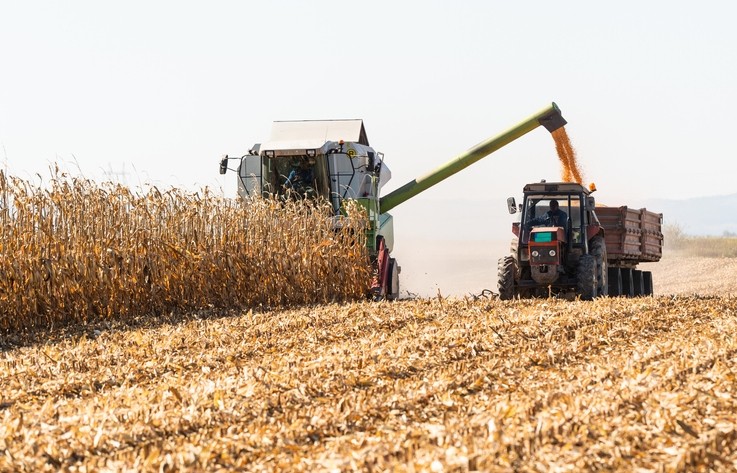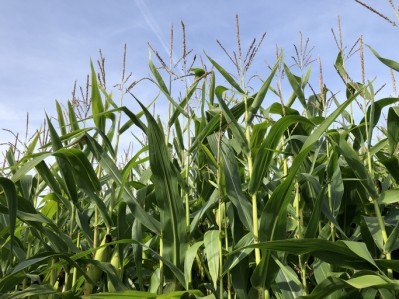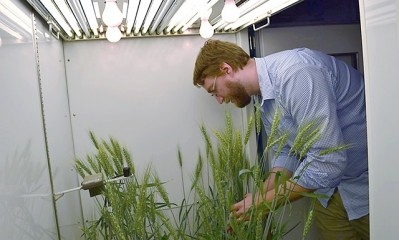Special edition: Reports from IPPE
Feed intake, gut health challenges raised with mycotoxin presence

At this year’s International Production and Processing Expo (IPPE) we spoke with Nick Adams, Alltech’s mycotoxin management team global director to hear more about what mycotoxin testing has been finding in this year’s corn crop and hear more about what it could mean for producers.
The late start to the planting season, cold and wet production conditions and the delayed harvest influence which mycotoxins may be present and to what degree in feed crops like corn, he said.
Overall, for the 189 samples tested from this year’s harvest, the average sample had about 7.76 mycotoxins and the samples with the most mycotoxins had more than 14. The average concentration was highest for type B trichothecenes, which includes deoxynivalenol (DON), at 1323.5 parts per billion followed by fumonisins, according to company data.
“It was another incredibly wet year,” Adams said. “That then determines that certain mycotoxins – particularly this year we are seeing things like DON [deoxynivalenol], some of the emerging mycotoxins and zearalenones – would be quite prevalent.”
Testing at both the feed mill and in feed could play a role for feed producers this year as both systems provide different information, he said. “Testing in the feed mill is important because it’s about weeding out those highs as best you can because that has a big impact on what’s going to be in that finished feed,” he added.
Testing of complete feed provides an understanding of the other mycotoxins that could be present and looks for a wider range of mycotoxins than the rapid, single mycotoxin tests completed at a feed mill, he said.
“It’s almost a verification to say is the QC [quality control] method working for DON and zearalenone, because those levels are being maintained at an acceptable level,” he said. “And are we making sure that we’re not missing something else that we can’t test for at the feed mill, but that could potentially have an impact on performance – that’s how the two testing systems can work hand-in-hand.”
Looking at the types and levels of mycotoxins found during testing, sows and dairy cows could see challenges as zearalenones has a negative effect on fertility, Adams said. However, the primary influence from DON is expected to be in gut health and possibly reduced feed intake or weight gain.
Younger animals across all the production species will also be more sensitive, he said.
While clinical signs are not anticipated to be present, there could be challenges for animals reaching market weight as DON presence can reduce feed efficiency, feed intake and gut health, he said. “If we look at birds, DON is really the one that stands out at the levels that we’re talking about that really is the one that brings the most potential to reduce performance – when you look at most of the negative impacts of mycotoxins, feed intake is a big driver,” he added.
Issues like lesions and gizzard erosion in birds are more closely linked with T2 and other mycotoxins in that class, he said.
“It will be interesting to see the soybean [samples] when those come through,” he said. “We don’t have a lot of numbers on soybeans and sometimes soybeans can be a carrier of T2 so that will be one to watch for.”
Mycotoxin presence in corn
Samples from this year’s corn crop in the US are showing higher concentrations of the mycotoxin DON than previous crops, while concentrations of zearalenone have been high for the past two years, said Adams. Fusaric acid, fumonisin and other toxins generated by fusarium mold have also been present.
Unlike previous years, the current crop appears to have higher average levels of DON rather than fumonisins, he said.
“What we’re seeing certainly in this data set is that fumonisins are not that high this year,” he said. “We find them in 60% of samples, but because it’s such a cold, wet year that really drives the trichothecenes, it drives zearalenones and so fumonisins are not so high.”
In terms of the risk potential from using grains or feeds with an amount of mycotoxins present, fumonisins do not present the largest challenge, he said. “Where the risk is coming from is that DON family and for pigs the zearalenones,” he added.
Swine are sensitive to DON and zearalenones and there can be a negative synergistic interaction between DON and fusaric acid, Adams said.
However, the average levels of the mycotoxins found can be managed, he said.
“It’s not like it’s been a bad year and the levels are so super high that it’s going to be really challenging and you can’t do anything about it – those average levels, there’s risk there because there are mycotoxins there, but people can with a good understanding of the mycotoxin levels, a good formula, can work with those and then use the mitigating agents,” he added.
One ideal step that could be taken would to segregating feed ingredients with different levels of mycotoxins and then feeding them to species that are less sensitive, he said. “That for me is ideal when they can do that and if they can’t then you’ve got to understand what are my levels and what is the potential on the species I’m feeding and what steps am I going to take to mitigate that in the animal,” he added.
“Within the average, there are some very high maximums [and] that’s the piece that feed mills really have to understand because the animal doesn’t eat the average, the animal is going to consume the range put in front of it,” Adams said. “That’s the piece that really comes back to the mycotoxin testing – this is the piece any quality control program is trying to weed out, those maximums, so they don’t get into the production systems because those would definitely bring issues.”
However, understanding the levels present and removing the highest levels is an area where the feed industry has improved, he said.
Small grain considerations
Along with corn, there are considerations for producers planning to use screenings, wheat mids, or residue from grains like wheat, said Adams. The fibrous portion of the grain, which acts as a seed coating is the first place for mold and can contain higher levels of mycotoxins.
“We think about things like wheat mids, wheat bran those things are going to be high-risk materials,” he added.
“When we think about that from an ergot standpoint, we know last year was a challenging year for small grains and ergot in the northern parts of the US and Canada and we’re managing that as we feed it out,” he said.












